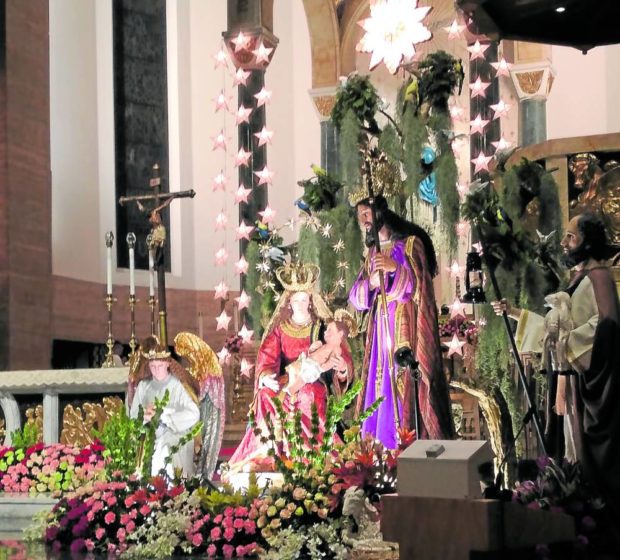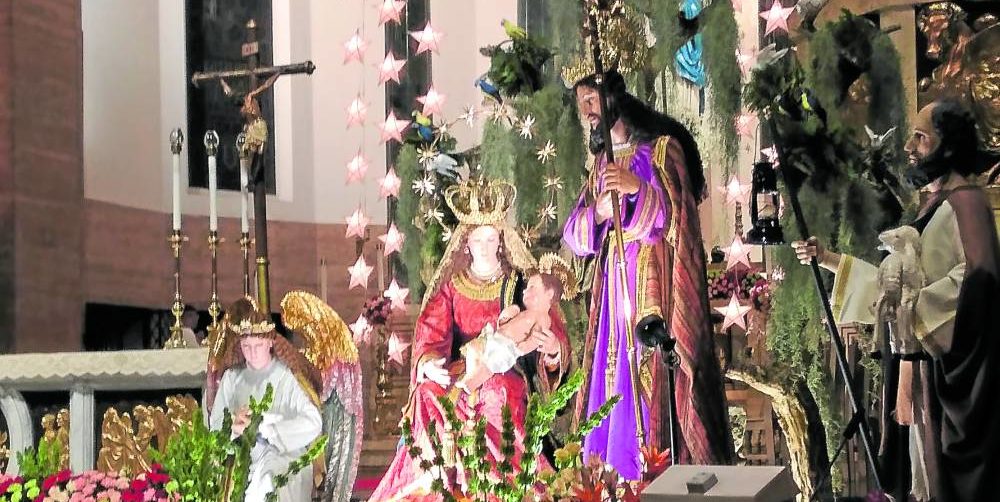“Almighty ever-living God, we humbly implore your majesty, that, just as your Only Begotten Son was presented on this day in the Temple in the substance of our flesh, so, by your grace, we may be presented to you with minds made pure.”—Collect, Feast of the Presentation of Jesus in the Temple (Feb. 2)
Every year, people ask, “When do we take down our Christmas tree?” Sound familiar? Perhaps every single Christian has asked themselves this question at least once. So, when do we actually take down our Christmas trees? When does the Christmas season actually end?
First off, it must be understood that Dec. 25, Christmas Day, the Feast of the Nativity of Jesus, is only the beginning of the liturgical season of Christmas. I find it unfortunate that some people say that “they no longer feel the Christmas spirit after Dec. 25,” when the reality is so wonderful, you don’t just celebrate it for one day! Much more the feast we remember when the Lord was “incarnate of the Virgin Mary and became man,” as the Nicene Creed states.
From a liturgical perspective, the Christmas season officially ends on the Feast of the Baptism of Jesus, which falls on Jan. 9 this year. In the Philippines, the Christmas season is sometimes extended until the Feast of the Santo Niño, which falls on Jan. 16 this year.
However, there are also some Catholics who celebrate Christmas all the way until Feb. 2 each year. Yes, you read that right: Some people celebrate Christmas from Dec. 25 all the way until Feb. 2. That’s a solid 40 days of Christmas!
Why? In Catholic tradition, Feb. 2 is celebrated as the Feast of the Presentation of Jesus in the Temple when Mary and Joseph took the Baby Jesus to the temple in Jerusalem to present Him to God the Father, as per the Jewish custom that “as it is written in the law of the Lord, ‘Every man that opens the womb shall be called holy to the Lord’” (Luke 2:22-38).
In addition, Feb. 2 is also known as the day the Church blesses candles, Candlemas Day. After all, as the prophet Simeon declares Him to be, Jesus is the “light for revelation to the Gentiles” (Luke 2:32).
So, what does that have to do with Christmas?

Religious season
Celebrating Christmas all the way until Feb. 2, in my opinion, connects the wonderful reality of the birth of Jesus to His saving act on the cross. He came to this world for a reason, that is, to save us from our sins.
And this salvific mission of Jesus is wonderfully foreshadowed in the Feast of the Presentation of Jesus in the Temple: the act of Mary and Joseph presenting the Baby Jesus to God the Father foreshadows Jesus on the cross, who presents Himself to God the Father as “this pure victim, this holy victim, this spotless victim” (Eucharistic Prayer I) for the salvation of the world.
Celebrating Christmas all the way until Feb. 2 gives an overall deeper meaning, I think, to the reason the nativity of Jesus happened in the first place.
So, does this mean we can say “Merry Christmas” all the way until Feb. 2? In my opinion, although it may seem very unusual, absolutely! I think it’s high time we recognize Christmas for what it is—a religious season. It’s not just a single day, and it’s not just a marketing selling point used by businesses to draw in shoppers.
Doesn’t that give us more reason to keep the holiday hot chocolate pouring and “Christmas in Our Hearts” playing? —CONTRIBUTED INQ
The author is pursuing his master’s degree in Catholic Studies with the Franciscan University of Steubenville in Ohio.









































